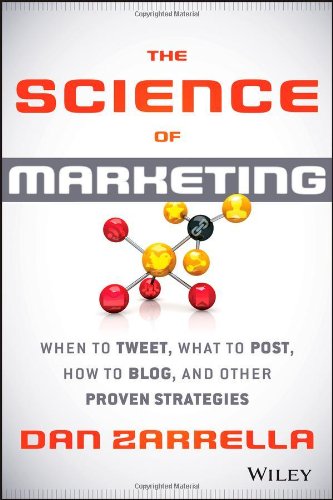How to write your automated email series

My automated email series makes me happy.
One of the most useful and effective marketing things you can do is email marketing. You probably know that already.
But, if you’re like me, and lots of my business mentoring clients, you don’t send out emails as often as you should.
When you’re running a small business, you’re so busy looking after customers, chasing leads, nurturing your pipeline and all the other stuff, that sending out your email newsletter gets left out.
It’s one of those things that seems to linger on our to-do lists, generating guilt. And more importantly, losing you potential sales.
Your automated email series is an easy fix to this problem
If you, like almost every other business owner in the world know that you should be using the power of email marketing a lot more.
But if you don’t ever seem to have the time to send out those regular updates, then setting up an automated email series is the way to fix that problem.
I should know.
My secret confession is that I didn’t send out my email newsletter for two years. I was collecting addresses on my websites, getting lots of business cards at networking events and I did absolutely nothing with them for two whole years.
I have no idea how much business I lost out on because of that, but it’s definitely tens of thousands of pounds. And I was just like you, I was busy, looking after clients, writing blogs, running my business.
And I completely forgot about all of those hundreds of people who had signed up to get regular tips on how to run a small business.
Why an automated email series is the answer
When I finally got round to doing something to get me out of my guilt about all of those people who were signing up, I did some research.
I read Ian Brodie’s great book on email marketing, and I read The Science of Marketing.

These two got me fired up about the power of email marketing, which gave me a very strong incentive to use it a hell of a lot more. And the authors strongly recommended that I use an automated email series.
I knew that if I set myself a weekly task of writing a weekly email update, then I would very shortly be missing my deadline again. I also knew exactly what I’m like. I’m a binger. Not on drugs or alcohol, but I like to do a bunch of stuff all at one time.
I don’t like to clean my house, but once in a while, I’ll do a big clean up and spend a couple of hours scrubbing away at all the bits in the corners that my cleaner has missed.
I like to write, but I have to be in the mood and have some space in my diary to write properly.
An automated email series means that I can write a bunch of emails, and put them into Drip, to be sent out one at a time, once a week.
I have to tell you that this is absolutely brilliant. I don’t have to think about sending out the email newsletter. In fact, the only reason that I know that it’s gone out is when I suddenly get a bunch of out of office autoresponders in my inbox.
There is something extremely pleasurable about thinking that you’ve achieved a marketing task, i.e. sent out your email newsletter, while you’re busy doing something else.
My process for automating my email series
I write a bunch of the business stories that I send out to people every week. I usually do five or six at a time, and I also add in some ideas for other stories that I might write.
Sometimes I think of story ideas, and I have a special section in my to-do list to jot them down when I think of something good but I’m in the middle of something else.
When I have a free afternoon, I can sit down and really enjoy writing something good.

Once I’ve binged on getting some good stories out, I let them sit for a day or two and then I edit them down. And throw away any of the rubbish ones.
I then send them off to my proofreader who polishes them and finds all the mistakes that I’ve missed. I then forward the word document to my virtual assistant who puts them into my MailChimp series for me.
I could do this last bit myself, but like I said I’m busy doing other things, and I like to delegate. It probably cost me about £30 to get this additional help, and it’s well worth it.
Instead of having “send out email newsletter” on my to-do list every week, which I know I would just ignore, now I have “write some email stories” on my to-do list as a recurring monthly event. I like to always have a couple “in the bank” so to speak.
Why some people don’t like an automated email series
I ran a workshop earlier this year about email marketing. Here are the notes on that if you would like some more tips to get going better and faster with your email marketing.
Interestingly, when I suggested to people that they should automate their email marketing, lots of people in the room pushed back about this suggestion. They didn’t like it.

One of the objections was that in MailChimp, you have to pay for an automated email series. I think it’s nine dollars a month.
Don’t tell MailChimp, but I would happily pay $90 a month for the automated emails series service to make sure that my emails actually go out and I get round to writing them when it suits me.
Update – I’ve now moved my emails from MailChimp to Drip, and MailChimp is now including some automation within their free package.
But the objections from folk on my workshop seemed to go deeper than that. I think there were a couple of reasons why people didn’t like the idea of an automated email series.
Automating your email series is somehow wrong?
I’ve had this before from a few people. Some social media gurus who have told me that it’s really naughty to pre-schedule my tweets because I’m not properly “engaging” with my audience.
There seems to be an idea that to be truly authentic, we should never automate anything or do things in advance.
The problem is, that unless you’re a super organised do things in advance kind of person, as a small business owner, you’ll never get anything done.
We just don’t have enough time in the day, and we have to be more productive than those fatcats at the big companies.
If you’re worried about being authentic as a small business owner and engaging with your audience, all you have to do is make sure that the people who want to talk to you can get in touch.
Encourage people to reply back to the emails that you send out to them in your automated email series. Ask them questions. And then when they do reply, take it seriously and get back in touch with them.
It’s not wrong to automate your marketing processes, including your email series. It’s just a good way of being very productive with your time.
It’s not an “email newsletter” if you wrote it a year ago and send it in an automated email series?
If you sign up to my email stories today (here’s how to do exactly that and see how I do my automated email series) then you’ll get an email that I wrote in 2014.
It’s a good one, about chocolate and Himalayan salt, as they pertain to business differentiation. It’s definitely not an email newsletter, because there’s no news in it.
But why would I want to send out an email newsletter?
Would you be interested in getting regular emails from me telling you about… Well, now come to think about it, I can’t think of anything that would be interesting in terms of Joy of Business gossip or news that I would want to burden you with.
And of course, the lack of anything in the company that could be regarded as news is a big reason why people don’t get round to sending out their regular email newsletters.
Some companies are always winning awards, launching new products, getting invited to go to interesting places to give a talk about the latest in neurosurgery.

But most of us folk running small businesses don’t have that much of interest to tell people about.
We’re too busy just getting on with our work. And we can’t tell people about that, because the work that we do with our clients is confidential.
Thinking of regular emails to your customers and potential customers as an email newsletter or update is a route to disaster.
Forget about the email newsletter, just be useful
Ditch the idea of it being an email newsletter. Just send out some interesting, useful bits and pieces, regularly to anyone who signs up.
This might be something that you specifically write for the automated email series, or it might be a couple of links to interesting blogs on your site.
Or you might have a roundup of other people’s content, in your industry, and send that to people. Make sure it won’t go out of date too quickly, because you might be running your automated series for a few years.
Have a good think about what would be useful, and what you could send out. In particular, try to get a good idea of what your potential customers would find useful. And test that out.
Send out a range of things and then see what the open rate and click-through rates are the different types of emails.
Some people take a slightly more sophisticated approach with this and ask people when they sign up what kind of content they would want.
I’ve been thinking about doing that as some people seem to really like the very direct “how-to” type content, whereas other people get much more out of the stories I share. That’s a nice idea, and well worth trying.
Some resources to get you going on email marketing automation
I definitely recommend Ian Brodie’s book Email Persuasion. Ian also has some great resources on email and online marketing at his blog, and I pay for his Momentum Club product where he sends me great marketing tips and webinars every month.
Some people love MailChimp, and some people love Aweber, they seem very similar in terms of pricing and ease-of-use to me.
If you’re wanting to get serious with your email marketing, I’ve recently moved my own email marketing from Mailchimp to a product called Get Drip. It allows for a much more sophisticated approach, and it’s more expensive.
But if the lifetime value of your customer is more than £400, it’s worth paying the extra cash for Drip and getting started with a system which allows you to do so much more.
And if you would like to add a lead magnet or ethical bribe to encourage people to sign up to your email List, the guys at Thrive have several really neat products, including the light boxes you might see on this site, and a neat way of setting up content upgrades.
Still confused?

I’ve done some one-off sessions with people to plan out exactly how their automated email series should work, and how to get a virtual assistant to set this up for them.
If this sounds like the sort of help you could do with, to get you going along the right path for your business, this is how to book a one-off session with me.
A few more thoughts on email marketing
Something completely different
Why people unsubscribing from your list is a good idea
Photo credit – amazing drops in series by Nick Harris, John Schnobrich on Unsplash, Simon Callaghan at SimonCallaghanPhotography, Product Launch from Pxhere and Liz Finlayson at Vervate.


